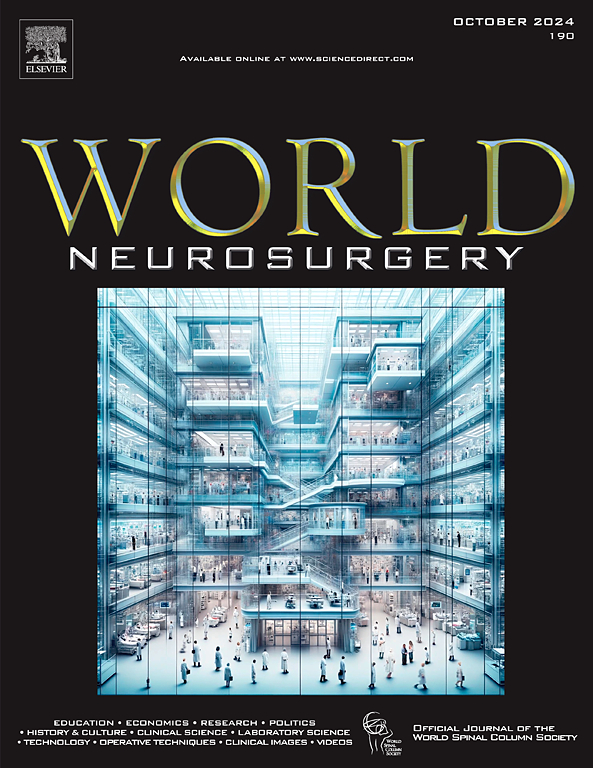人工智能眼中的腰椎痛:你能 "想象 "出我的 "感觉 "吗?
IF 1.9
4区 医学
Q3 CLINICAL NEUROLOGY
引用次数: 0
摘要
目的:疼痛是一种复杂的感官和情绪体验,严重影响个人的身心健康。腰椎痛(LRP)是一种普遍的神经性疼痛,每年影响 9.9% 至 25% 的人口。准确识别腰椎痛的疼痛模式对于诊断和管理至关重要。人工智能在医疗保健领域具有潜力,但在可靠性和准确性方面面临挑战。本研究旨在调查 ChatGPT-4o 显示的 LRP 模式的准确性和一致性:研究于 2024 年 6 月 1 日至 6 月 30 日在于斯库达尔国立医院进行,使用的是 GPT-4o 语言模型。在解剖模型上提示 ChatGPT-4o 生成并标记 L4、L5 和 S1 根神经病的 LRP 模式。两周后重复这一过程以评估一致性。ChatGPT 的标记与两位经验丰富的专家使用 OpenCV 进行的标记进行了比较分析。进行了包括曼-惠特尼 U 检验在内的统计检验:结果:ChatGPT 对 L4、L5 和 S1 根性病变疼痛模式的初始标记和随访标记与专家的标记在统计学上有显著差异(p):ChatGPT 目前缺乏准确、一致地表现 LRP 模式的能力。医疗保健领域的人工智能工具需要进一步完善、验证和监管,以确保可靠性和安全性。未来的研究应涉及多个人工智能平台和更广泛的医疗条件,以提高普适性。本文章由计算机程序翻译,如有差异,请以英文原文为准。
Lumbar Radicular Pain in the Eyes of Artificial Intelligence: Can You ‘Imagine’ What I ‘Feel’?
Objective
Pain is a complex sensory and emotional experience that significantly impacts individuals' well-being. Lumbar radicular pain (LRP) is a prevalent neuropathic pain affecting 9.9% to 25% of the population annually. Accurate identification of pain patterns in LRP is essential for diagnosis and management. Artificial intelligence has potential in health care but faces challenges in reliability and accuracy. This study aimed to investigate the accuracy and consistency of LRP patterns demonstrated by ChatGPT-4o.
Methods
The study was conducted at Üsküdar State Hospital from June 1 to June 30, 2024, utilizing the Generative Pretrained Transformer (GPT), version 4o language model. ChatGPT-4o was prompted to generate and mark LRP patterns for L4, L5, and S1 radiculopathies on an anatomical model. The process was repeated after two weeks to assess consistency. The markings by ChatGPT were compared with those by two experienced specialists using OpenCV for analysis.
Results
ChatGPT's initial and follow-up markings of L4, L5, and S1 radiculopathy pain patterns were statistically significantly different from each other and from the specialists' markings (P < 0.001 for all comparisons).
Conclusions
ChatGPT currently lacks the capacity to accurately and consistently represent LRP patterns. AI tools in health care require further refinement, validation, and regulation to ensure reliability and safety. Future research should involve multiple AI platforms and broader medical conditions to enhance generalizability.
求助全文
通过发布文献求助,成功后即可免费获取论文全文。
去求助
来源期刊

World neurosurgery
CLINICAL NEUROLOGY-SURGERY
CiteScore
3.90
自引率
15.00%
发文量
1765
审稿时长
47 days
期刊介绍:
World Neurosurgery has an open access mirror journal World Neurosurgery: X, sharing the same aims and scope, editorial team, submission system and rigorous peer review.
The journal''s mission is to:
-To provide a first-class international forum and a 2-way conduit for dialogue that is relevant to neurosurgeons and providers who care for neurosurgery patients. The categories of the exchanged information include clinical and basic science, as well as global information that provide social, political, educational, economic, cultural or societal insights and knowledge that are of significance and relevance to worldwide neurosurgery patient care.
-To act as a primary intellectual catalyst for the stimulation of creativity, the creation of new knowledge, and the enhancement of quality neurosurgical care worldwide.
-To provide a forum for communication that enriches the lives of all neurosurgeons and their colleagues; and, in so doing, enriches the lives of their patients.
Topics to be addressed in World Neurosurgery include: EDUCATION, ECONOMICS, RESEARCH, POLITICS, HISTORY, CULTURE, CLINICAL SCIENCE, LABORATORY SCIENCE, TECHNOLOGY, OPERATIVE TECHNIQUES, CLINICAL IMAGES, VIDEOS
 求助内容:
求助内容: 应助结果提醒方式:
应助结果提醒方式:


